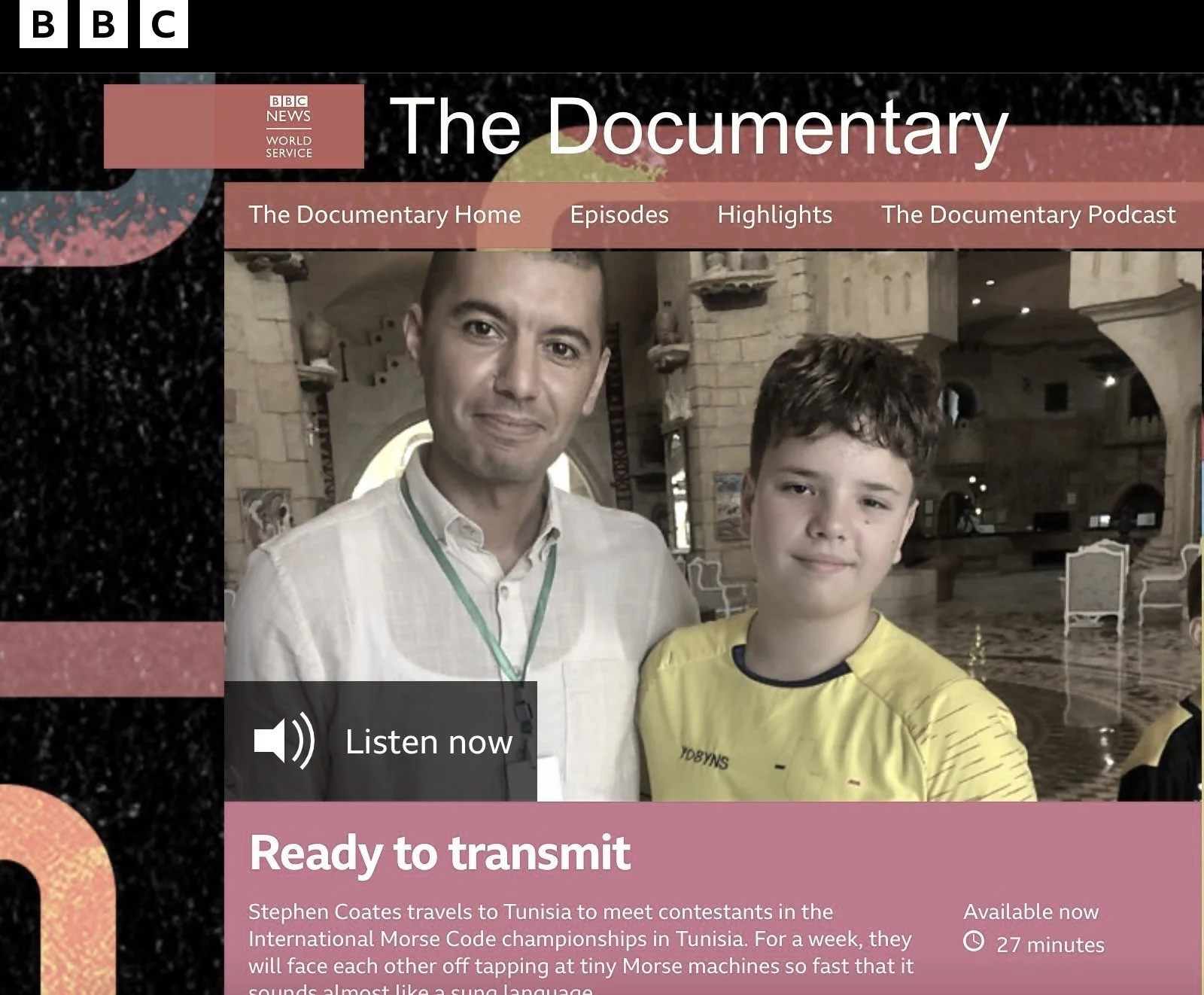A little off-topic, but I recently made a radio program with producer Monica Whitlock for BBC World and Radio 4.
During my researches into Bone Music, I got interested in radio (an important source of forbidden music to make x-ray records). That took me deep into the extraordinary world of shortwave, number stations - and Morse code.
Morse Code is a nearly 200 year old language, once used in every nation, the sound of which most of the world recognised, without a clue what was being said. Its words are composed of just dots, dashes and spaces, transmitted over distance in coded signals of electrical pulses of sound or light.
It was invented by an artist and used by soldiers, spies and sailors; its mysterious tones soundtracked the cold war and were a sonic weapon in the Allies' arsenal against the Axis powers in World War 2.
But what has happened to it in the age of cell phones, email and instant messaging?
Does it even still exist?
We set off on a journey to find out - and it took us to some extraordinary places and people.
Click below to listen:
For anyone who doesn’t know (as I didn’t), what the difference between Shortwave and Longwave radio is. - here is a nerdy if simple explanation.
Shortwave Radio (SW) can travel long distances by bouncing off the ionosphere
Its advantages:
• Can reach thousands of miles, even across continents.
• Works well for international broadcasting and emergency communication.
• Can be received in remote areas without needing satellite or internet access (good for spies)
Its disadvantages:
• Signal quality can be affected by atmospheric conditions and interference.
• Requires specialized radios that can tune to shortwave frequencies.
• Fading and distortion are common due to varying ionospheric conditions.
Longwave Radio (LW) travels as ground waves, following the Earth’s surface.
Its advantages:
• Very stable signals with minimal interference, making it ideal for continuous broadcasting.
• Can cover large areas, especially useful for national broadcasts in Europe.
• Works well in tunnels, valleys, and over water.
Its disadvantages:
• Limited range compared to shortwave—typically reaches only a few hundred miles.
• Requires large antennas for both transmission and reception.
• Not widely used in some parts of the world, such as the U.S., limiting its reach.
Which One is Better?
• If you need global coverage, shortwave is the better choice.
• If you need reliable regional or national coverage, longwave is more stable.
Many broadcasters have moved away from both in favor of FM, digital radio, and internet streaming, but shortwave still plays an important role in international news, military, and emergency broadcasts - and some other crazy situations as you wil learn if you lsten to the BBC radio program.

